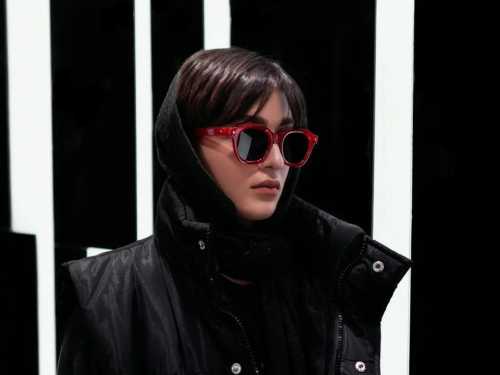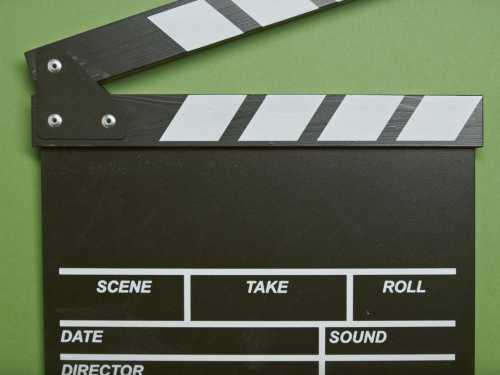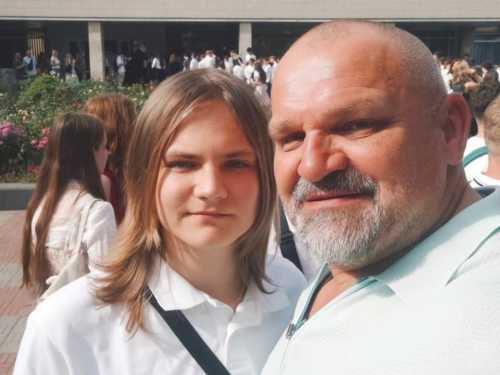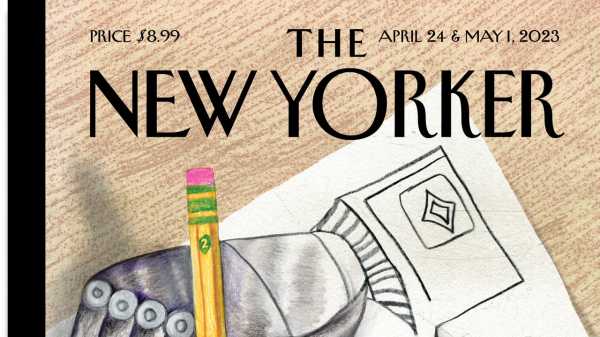
Chatbots and image generators, newly on the rise, have sparked our imaginations—and our fears. As artificial-intelligence machines sharpen their ability to translate written prompts into images that accurately capture both style and substance, some visual artists worry that their specialized skills might be rendered irrelevant. Even so, the new technologies at our disposal broaden our understanding of the relationship between artist and work. In her cover for the April 24 & May 1, 2023, Innovation & Tech Issue, her first for the magazine, JooHee Yoon addresses the topic in a clever image that illustrates the reciprocity and the tension that can exist between artists and these high-tech tools (is the robot hand drawing the real hand, or vice versa?). Yoon’s cover also demonstrates what makes artists unique: their ideas and their point of view.
M. C. Escher (1898-1972), a Dutch graphic artist whose approach was an inspiration for Yoon, is a case in point. Escher created many iconic works at the intersection of nature, mathematics, and perspective, using the unique language of the image to highlight a singular view of life’s puzzles and paradoxes. I talked to Yoon about inspiration, technology, artistic medium, and the impact of the new A.I. tools on real flesh-and-blood artists.
You found inspiration in M. C. Escher’s 1948 lithograph, “Drawing Hands.” What does this image mean to you?
Escher is an artist I greatly admired when I was a kid. I remember I had a puzzle with this exact image on it, and his tessellation kept me mesmerized for hours on end. I think I was drawn not only to the marvellous precision in his drawings but also to the witty concepts inherent in many of his pieces. There was a period in my elementary-school years in which I was obsessed with optical illusions. Doing this New Yorker cover feels a little like coming full circle.
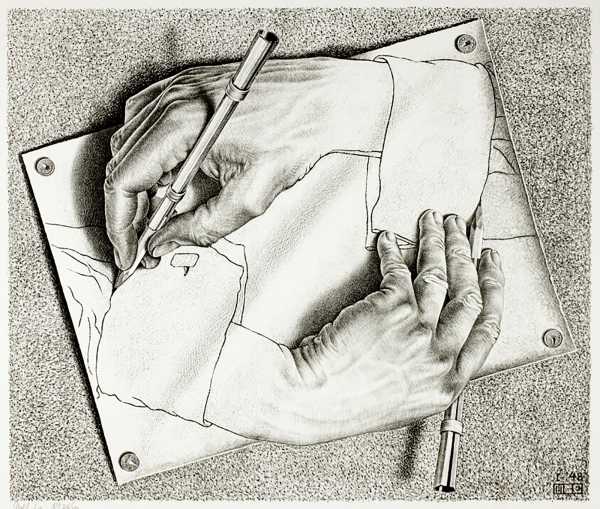
“Drawing Hands,” M. C. Escher, 1948.
You drew this image on paper and colored it digitally, combining traditional media with digital techniques. What do different techniques offer your work?
I am a big proponent of using old-fashioned analog methods and using digital tools to support and enhance the image, rather than creating everything on the computer. I think the computer can be an amazing device, allowing for greater flexibility in editing and collage. But doing things by hand results in mistakes and a level of unpredictability that I value greatly. My use of the computer is very much influenced by my experiences with traditional media—it allows me to manipulate and edit images so that the elements all work in harmony. Without my background in creating screen prints and linocuts by hand, my understanding of color interaction and texture would be very different. There is also a very practical side to this combined method: I’ve freelanced for more than a decade, and the one thing I always wish I had more of is time. Some project deadlines can be as short as a few days, or even the same day, and my use of digital techniques partly grew from a need to be as efficient as possible.
You have mentioned that Saul Steinberg, who did many covers for the magazine, has influenced your work. How so?
Saul Steinberg is one of my artist heroes, and that cat looking out the window is my definition of a perfect image. It’s just too good! Especially the collaged cat. The imperfection and the artist’s lack of fear in showing that the piece is edited make this image stand out to me. When I first saw that cover, I felt equal parts awe and jealousy. Although Steinberg can seem like a polar opposite of Escher in terms of style—with his loose, beautiful, and spontaneous way of drawing—I think they share a sharp wit and on-point concepts. If I can channel even a fraction of that energy into my work, I’ll be happy.
In addition to doing freelance work, you teach. How do you and your students view the recent developments in A.I., which allow anyone to create images by typing word cues?
This has been a big topic of discussion in the illustration department, and across campus at the Rhode Island School of Design. Whether we’re discussing the ethical implications of using A.I., copyright issues, classroom policies on plagiarism, or future job security, the conversation has been equal parts fascinating and startling. The speed at which this technology is developing is astonishing, so right now I feel like I am still wrapping my brain around it. From my limited understanding, since the current image generators—like Midjourney and DALL-E—are text-to-image models, where you write in prompts to produce an image, it feels like a very different way of using your brain. Working with words to create art and working with your hands to create art seem like two separate activities to me.
The studio courses I teach are a direct extension of my freelance illustration practice, combining hands-on techniques such as printmaking, collage, and the Risograph, with the underpinning principle that the idea behind the image is important above all else. My students are tasked with coming up with the best visual interpretation to convey a concept, with emphasis on finding their voice as an illustrator. So much of artmaking is really getting to know yourself through the creative process, of making mistakes and going down rabbit holes of research and experimentation that sometimes work out—and sometimes don’t. But the failures are just as important as the successes, and it all contributes to a better understanding of oneself. Coming up with ideas is a very personal endeavor, stemming from one’s lived experience. It’s the seed that leads to the creation of art, whether it’s an image, a sculpture, a performance, a piece of music or writing. A.I. is a generalist by nature, scraping from all data available, so to me it seems like a fundamentally different approach. One of the things I tell my students is that it’s just as important to know what you don’t like to do in order to find that thing you truly enjoy doing. I think this self-discovery, of learning to know yourself, is where A.I. falls short and the human experience still prevails.
For more covers about technology, see below:

“Future Generations,” by Daniel Clowes
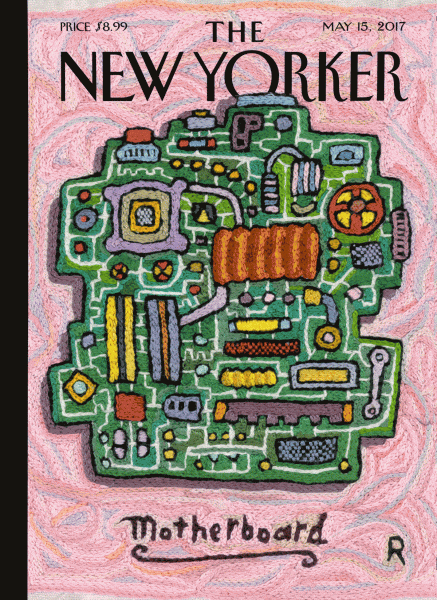
“Motherboard,” by Roz Chast
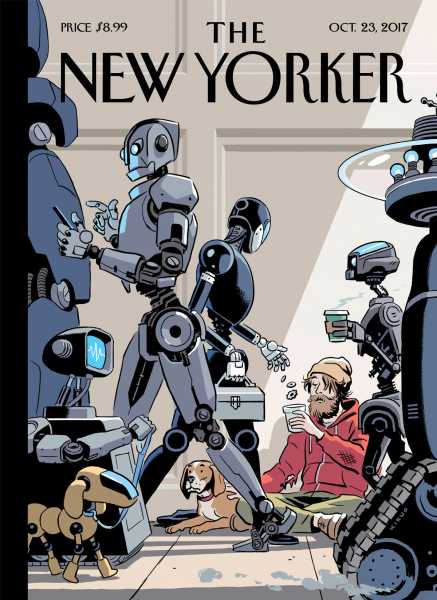
“Tech Support,” by R. Kikuo Johnson
Find covers, cartoons, and more at the Condé Nast Store.
Sourse: newyorker.com
